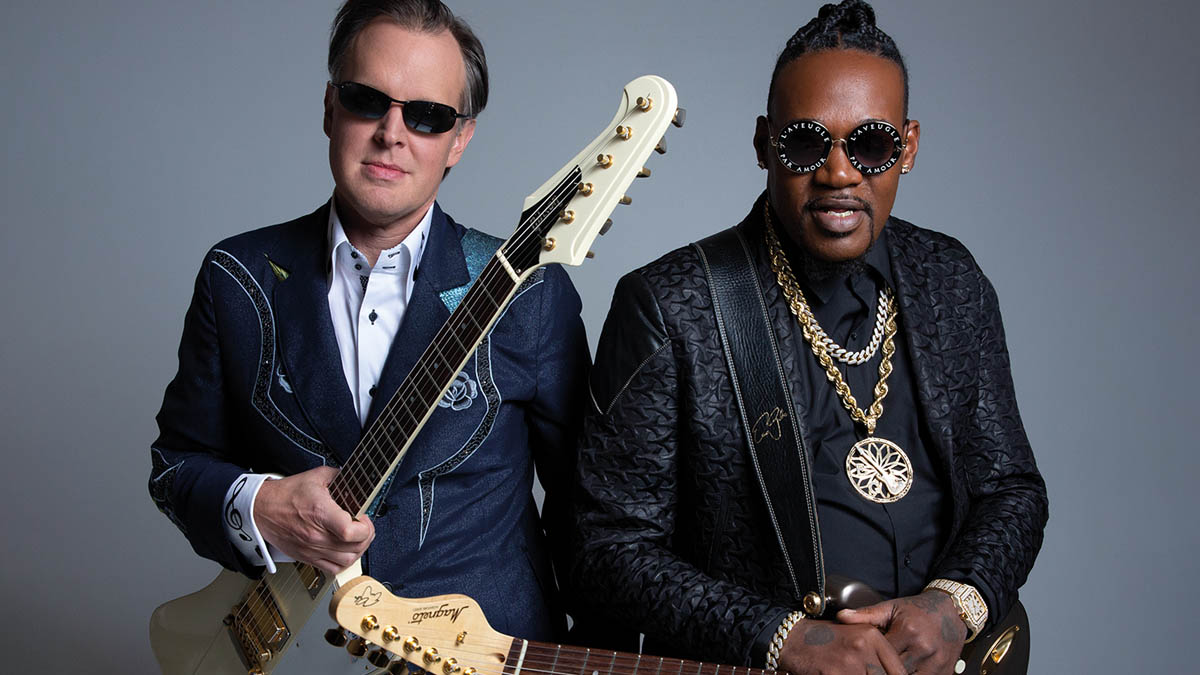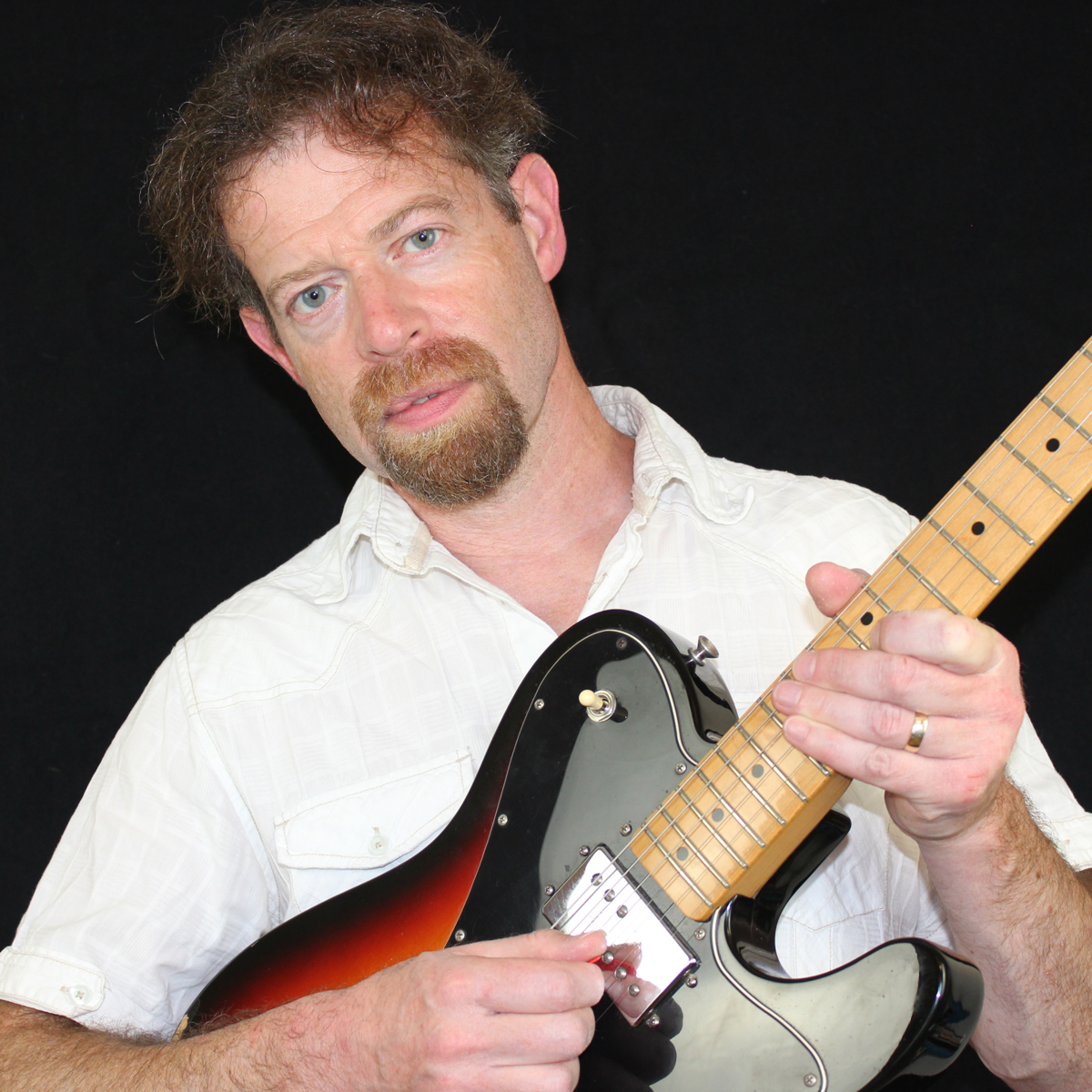Joe Bonamassa has collaborated with some of today’s finest blues players – learn their soloing secrets with this epic lesson
The JoBo Rolodex is filled with top blues guitar talent, and here we explore seven solo examples inspired by close contacts Eric Gales, Joanne Shaw Taylor, Kirk Fletcher and many more

Joe Bonamassa is a household name for guitar fans. Known for his impeccable guitar skills, great songwriting and vocals in a career that saw him opening for B.B. King at the age of only 12, he has risen to the level of blues superstar.
Selling out venues around the world with his amazing live concerts, his bandmates have included legendary musicians such as keyboard and Hammond organ player, Reese Wynans and the late, great Michael Rhodes on bass guitar.
Having an impressive recorded catalogue too, Bonamassa’s influences are numerous, including Eric Clapton, Jimmy Page and Jeff Beck as well as original blues guitar heroes like BB King.
These influences come together in a unique and masterful style which can hear Joe play anything from beautifully constructed classic blues solos to hard riffing, driving rock infused tunes containing trademark rapid pentatonic lines and Eric Johnson-inspired cascades of notes.
This lesson article not only features the playing style of Bonamassa himself, but also six other great blues guitarists with whom he has been associated. These are artists he has toured, played or recorded with, or produced or mentored.
There are seven mini pieces to learn in the style of each player (including Joe) which feature some of their kind of approaches to blues-rock guitar soloing.
Player 1: Joe Bonamassa
All the latest guitar news, interviews, lessons, reviews, deals and more, direct to your inbox!
Player 2: Josh Smith
Virtuoso guitarist Josh Smith’s style incorporates elements of jazz and country as well as blues. He has recorded and played with Bonamassa many times and is currently in his touring band.
Player 3: Kirk Fletcher
Fletcher is another virtuoso exponent of blues guitar. His soulful and ever tasteful playing is always a masterclass in how to play the blues. Again, he has played with Joe and has also toured in his road band.
Player 4: Eric Gales
Gales’ unique, virtuosic style is a tour de force of energy. Like one of his influences, the legendary Albert King, Gales plays a right-handed guitar, but left-handed and upside down, with the first string uppermost. Gales and Bonamassa have played live together and along with Josh Smith, Joe produced Gales’ stunning 2022 album, Crown.
Player 5: Joanna Connor
Another virtuoso player with a high-energy intensity, guitarist and singer Joanna Connor is a veteran of the Chicago blues scene. Aware of her as an artist, Bonamassa and she connected and he (along with Josh Smith) produced her stunning album 4801 South Indiana Avenue.
Player 6: Larry McCray
Legendary blues scene veteran, Larry McCray is a blues singer and guitar player par excellence. ‘Rediscovered’ by Bonamassa, he and Josh Smith produced McCray’s 2022 album on JB’s Keeping The Blues Alive record label.
Player 7. Joanne Shaw Taylor
Another wonderful player and vocalist, Joanne had been playing on the UK scene since her teens when she was discovered by Dave Stewart (of Eurythmics fame). She has written and recorded with Bonamassa, and her albums, The Blues Album and Nobody’s Fool, were produced by Joe and Josh Smith.
There’s an array of different styles and techniques here and much to learn from these seven great guitarists. Enjoy!
Get the tone
Amp Settings: Gain 7, Bass 5, Middle 6, Treble 5, Reverb 4
Single coils or humbuckers will be suitable for the examples, with the latter being more suited to high-gain sounds. If you’re not in a position to crank up a tube amp, an overdrive pedal will be useful for varying degrees of simulated amp ‘breakup’ or overdrive, along with a boost pedal running into it to give more saturation to soloing tones if desired. Just add reverb.
Example 1. Joe Bonamassa
This is an uptempo 12-bar blues in the key of D. Bar 3: Make sure these one-and-a-half tone interval bends are accurate; if you’re not used to these wider interval bends, go easy and gradually work up to developing the technique.
Bar 8: This bar contains one of JB’s trademark style rapid-fire descending pentatonic runs using the notes of a D minor pentatonic scale (D-F-G-A-C). Practise this slowly
and with precision (use the picking suggested) as it is technically demanding.
Example 2. Josh Smith
This is a 12-bar jazz-style blues in the key of C with a three beat pick-up lick before the tune kicks in.
It mainly uses licks derived from C minor pentatonic (C-Eb-F-G-Bb), but also incorporates in places the major 2nd (D), major 3rd (E) and major 6th (A) which are borrowed from C major pentatonic (C-D-E-G-A) to give it its distinct jazzy Minor mixed with major tonality.
The b5 interval (Gb note) in bar 7 along with a quirky chromatic line in bar 8, add to the jazzy vibe.
Example 3. Kirk Fletcher
This one’s a 12-bar slow blues in the key of G. Again mainly using notes from
the G minor pentatonic scale (G-Bb-C-D-F), Kirk’s solo also borrows the major 2nd (A), major 3rd (B) and major 6th (E) from the G major pentatonic scale (G-A-B-D-E) and this helps to create a sophisticated Mixolydian-type sound.
Note too, how the overall space between the phrases and its softer dynamic approach help make the vibe of this piece.
Example 4. Eric Gales
This high-energy 16-bar blues is in the key of E, uses mostly E minor pentatonic scale (E-G-A-B-D) ideas and features several trademark Eric Gales style approaches.
As Gales’ playing derives from his obvious raw talent combined with his unauthodox approach, his whole style sounds massive and unique.
Some of the fast passages (as in bars 7 and 8) require some fast fretting-hand legato and the piece overall needs to be played with a sense of passion.
Example 5. Joanna Connor
This is an uptempo 12-bar blues in the key of A, using mainly notes from A minor pentatonic (A-C-D-E-G). This is quite a rocky style piece with quite a high-gain distortion sound.
Bar 5-6: This lick uses an open first-string pedal tone idea, where we pull off to the open string from the first five successive notes of the A Aeolian mode (A-B-C-D-E-F-G).
Bar 7: Note how the high B note (first string, 19th fret) gives a different, melodic colour – it’s the 9th interval against the A7 chord.
Example 6. Larry McCray
This 12-bar in B uses some great classic blues approaches. Another example of how the major and minor pentatonic combine to create that classic blues sound, here we’re using notes from both the B minor pentatonic (B-D-E-F#-A) and B major pentatonic (B-C#-D#-F#-G#) scales.
Bar 8: For this tricky ascending bend lick, in beat 3 bend up the 9th-fret, third-string E note, let it down, then quickly slide it up to the 12th-fret G note, quickly bending that up to the 14th-fret, A.
Example 7. Joanne Shaw Taylor
This is a 12-bar blues in the key of Bb, using predominantly Bb minor pentatonic (Bb-Db-Eb-F-Ab). It’s quite an uptempo tune, so make sure the licks are executed accurately and pay attention to bending accuracy.
Note the occasional addition of the major 6th (G note) borrowed from Bb major pentatonic (Bb-C-D-F-G).
Andy Saphir has been a professional guitar player and teacher for over 25 years. Graduating with distinction from London’s prestigious Guitar Institute in 1995, he has gone on to gain a reputation as one of the UK’s top country guitarists. Specialising in country and blues, Andy is a versatile, multi-genre player and has a successful international performing career, touring with numerous shows and bands, including the Blues Brothers Approved. Andy taught on the guitar faculty at London’s ICMP for many years, and is a longtime contributor to Guitar Techniques Magazine, as well as being a Jam Track Central artist. Andy teaches in-person guitar lessons from Cambridgeshire UK, or remotely globally.

